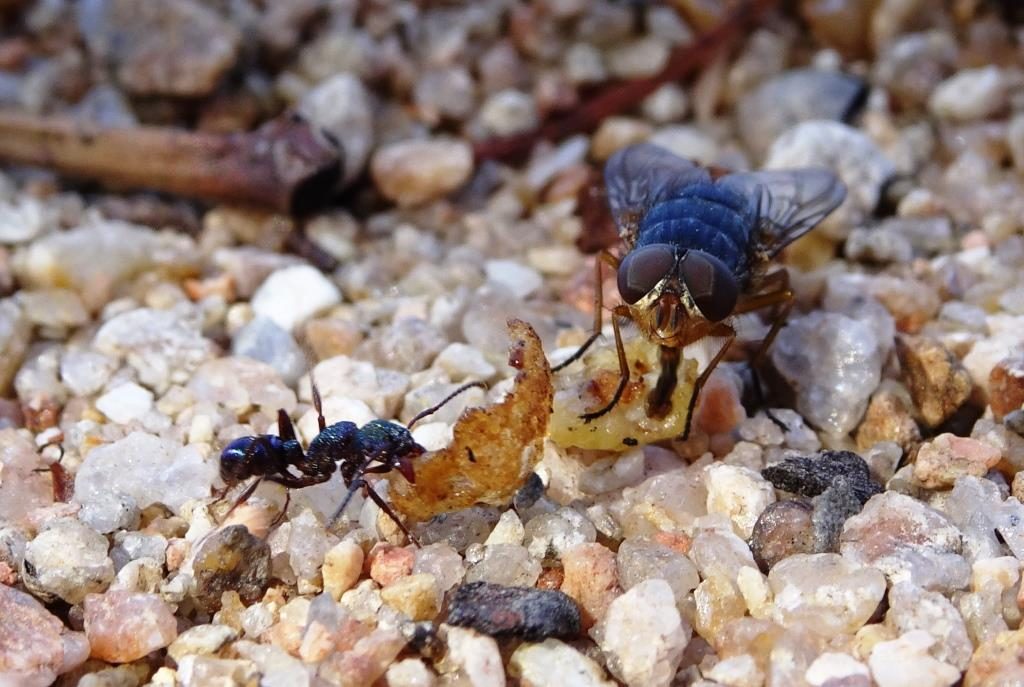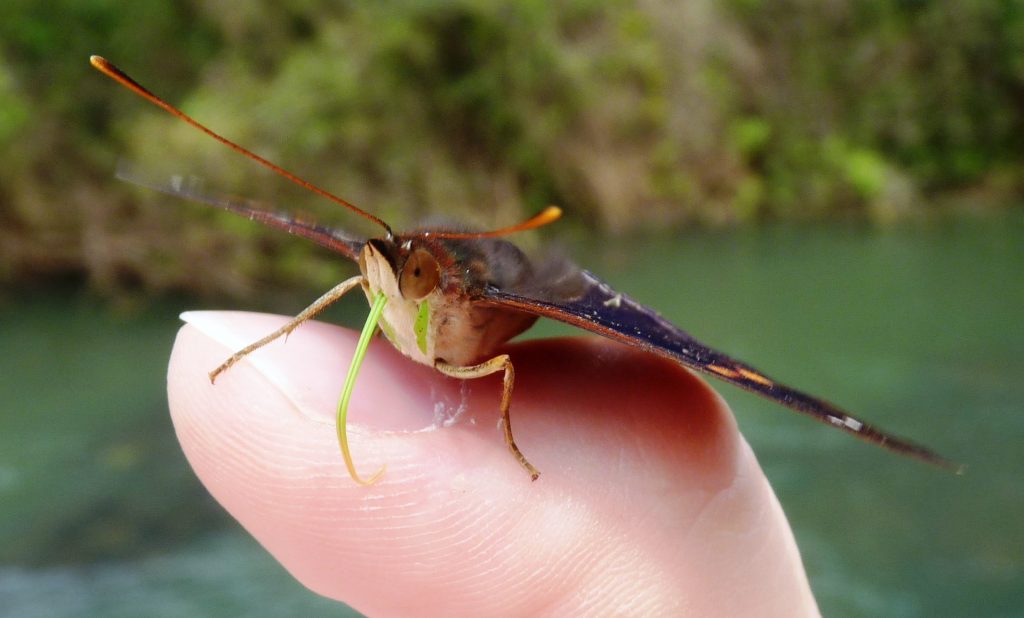Have you ever looked at an insect mouth up close? There’s a huge amount of variation in morphology that is related to the type of food an insect consumes. Mouth-parts of insects are composed of external appendages that project outwards, known as ectognathous mouth-parts (Greek: ecktos for outside, gnathos for jaw).
Many insects have chewing or mandibulate mouthparts, composed of mandibles (for grinding solid food), maxillae (for collecting food and assisting mandibles with mastication) and a labium (assists with manipulation of food). The three mouthparts work in conjunction to bring food to the mouth and grind it before ingestion. For example, ants have a highly serrated pair of mandibles for chewing a range of foods, from seeds to other invertebrates.
What about insects that prefer a liquid lunch? For butterflies and moths, the maxillae are modified into a siphoning proboscis to suck nectar or other fluids. Mosquitos have piercing-sucking mouth-parts are elongated such that the blood from an animal can be siphoned through the stylet (a fusion of maxillae and mandibles). There are several bloodsucking or predator flies that also adhere to this morphology, such as horseflies. The sponging mouthparts of regular house flies are adapted for liquid diets such that the mandibles and maxillae are reduced in size, and instead the labium is elongated with a sponge-like labellem at its tip. The labellum is used to secrete saliva over the food item to dissolve it and this liquid is then drawn up into the mouth.
This image of an ant and a fly fighting over a piece of food is a good example of the variation in mouth parts within the insect class.
Categories:
Biodiversity, Invertebrates, Morphology, Native Fauna

